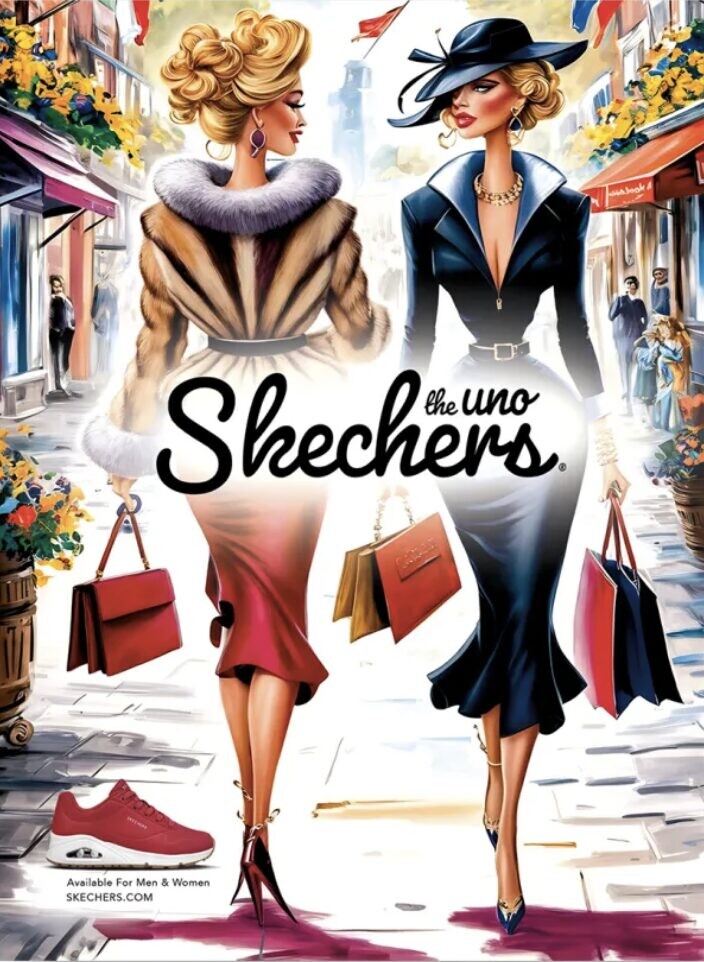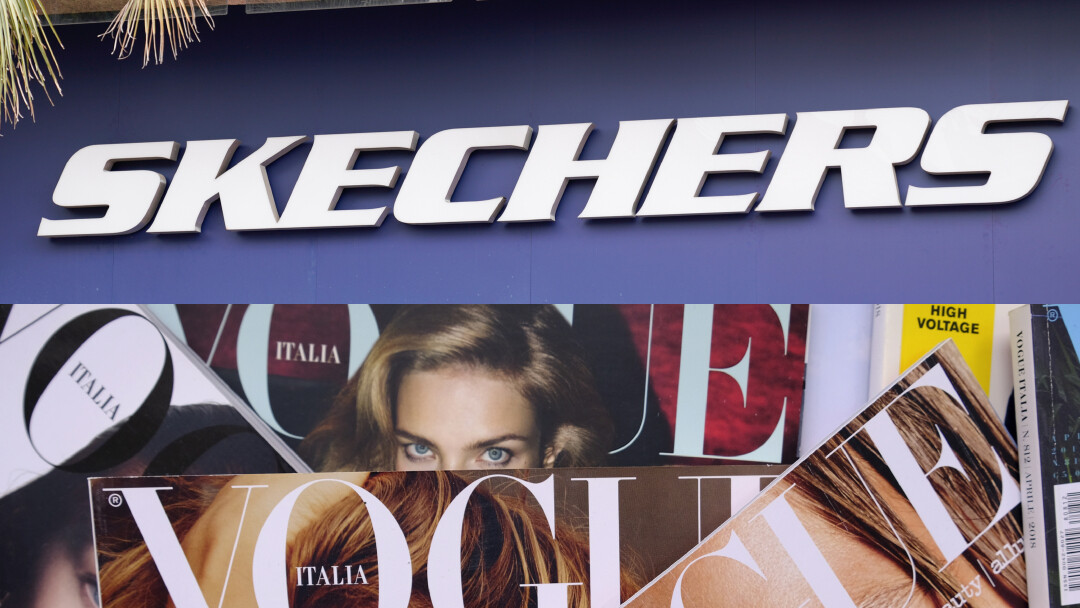Emily Telesco, Features Editor
@etelescocourant
As I sat flipping through my copy of December’s Vogue over the holiday break, I noticed something particularly unusual. A page depicting two women dressed in luxurious coats, red shopping bags in hand, walking through the streets of an idyllic Parisian-looking city. It was a Sketchers advertisement for their Uno Sneaker, with an image of the sneaker in red sitting in the corner of the page. The only catch was that the entire page – the women, their accessories, and the background was obviously AI generated. The women look cartoonish, almost painted, while indiscernible, faceless figures lurk in the background. And in a magazine that has a history of illustrated covers and that prides itself on authentic photography, this certainly seemed odd.

However, this specific ad is definitely not unique. The use of AI in advertising is on the rise. AI makes it easier and cheaper to do everything from generating creative ad designs to predicting campaign performances. It seems like the perfect asset for brands, right? Well, the industry and the general public seem to have conflicting opinions on it. Personally, I didn’t really like the Sketchers ad, and thought it looked fake and even a little unsettling. And I’m not alone with these opinions. A 2024 survey by Pew Research found that 61% of respondents were uncomfortable with ads tailored using AI based on their online activity. The Skechers ad, for example, received significant public backlash. Many others viewed it as weird-looking, unauthentic and overall a sloppy, cheap attempt. “They saved a bit of money, but now they’ve devalued themselves and shown how little they care about quality. It’s pathetic,” said one user on the Internet.
The failure to effectively connect with audiences through AI advertising can lead to similar consequences with other brands. Take Coca-Cola’s annual Christmas commercial, for example, which sparked controversy upon its release in November. Trying to pay homage to the 1995 “Holidays are Coming” ad, Coca-Cola partnered with three different AI-studios to make the vision come to life. However, viewers quickly noticed things were wrong with the AI-generated commercial. The shots were abrupt, the people were obviously all fake, and some of the background details had nonsensical shapes. The ad was dismissed as “soulless” by many commentators, and an overall bad effort to save money. They were also frustrated because it took away jobs from real artists and actors in the industry.
Despite these challenges, the future of AI in advertising still looks undeniably bright. As technology continues to advance, we can expect even more innovative applications. A great example comes from another Coca-Cola ad campaign, “Create Real Magic” from spring of 2023. Using OpenAI’s tools, Coca-Cola invited artists and fans to co-create visuals for the brand. The AI not only provided creative suggestions but also helped generate unique artwork inspired by Coca-Cola’s iconic imagery. This collaborative approach shows how AI has the power to embrace creativity, allowing brands to engage directly with their audiences while still producing high-quality content.

If used in a way that prioritizes inclusivity, authentic storytelling, and ethical practices, I believe AI definitely has the potential to create ads that truly connect with audiences on a deeper level. Instead of “cutting corners”, and being unauthentic, brands should use AI in a way that amplifies creativity and includes diverse voices in their ads. If brands can achieve that balance, AI won’t just be a shortcut – it’ll be a tool to create something meaningful. In the end, it shouldn’t be about replacing human creativity, but about enhancing it and highlighting voices that matter.




